ATELIER – KLASSE / KLASSE – ATELIER
„ATELIER – KLASSE / KLASSE – ATELIER“
Dům umění, Brno
Atelier Performance / Klasse Fotografie
Tomáš Ruller / Vladimír Špaček
FaVU VUT Brno / AfBK Mainz
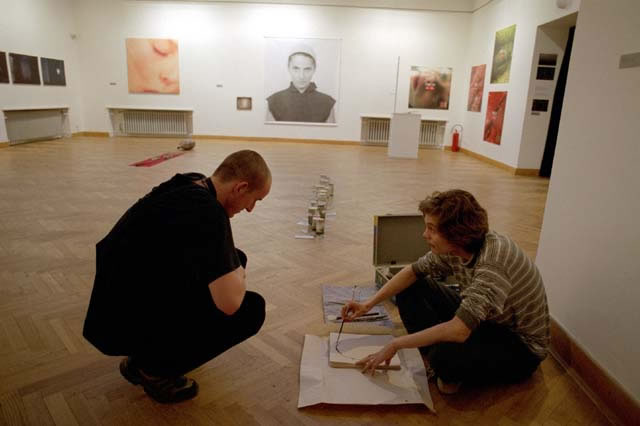




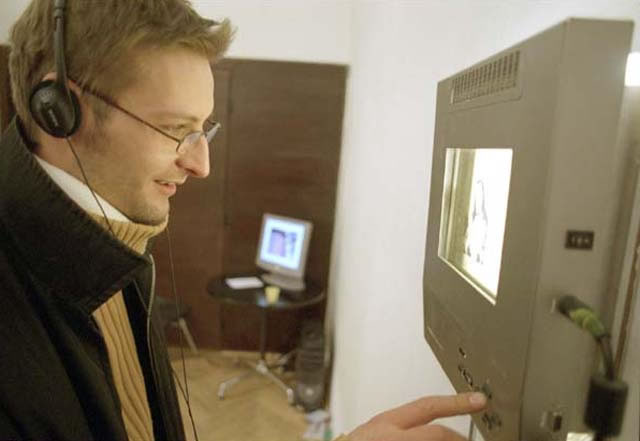
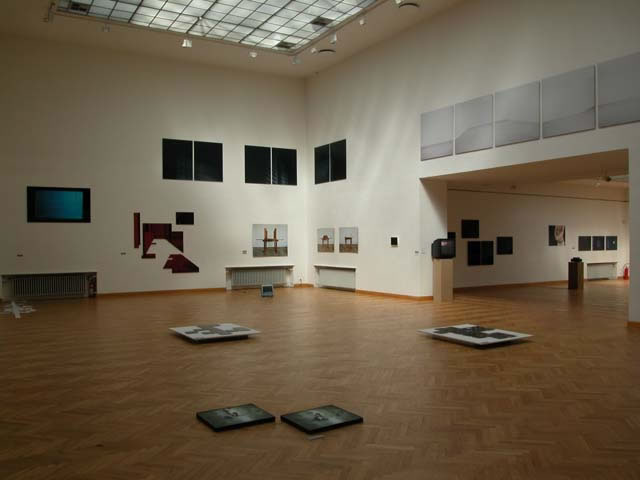


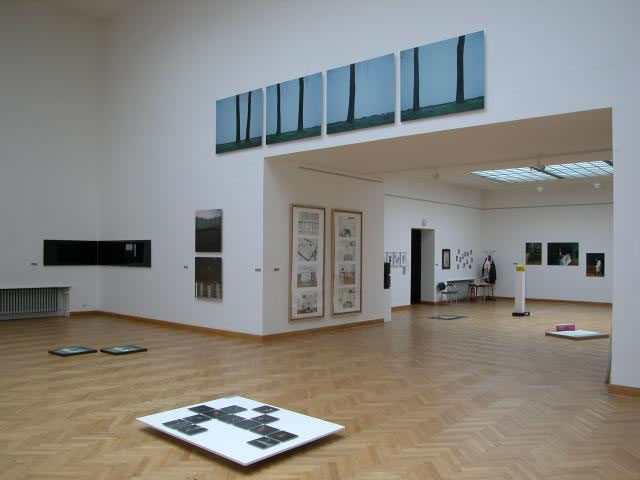

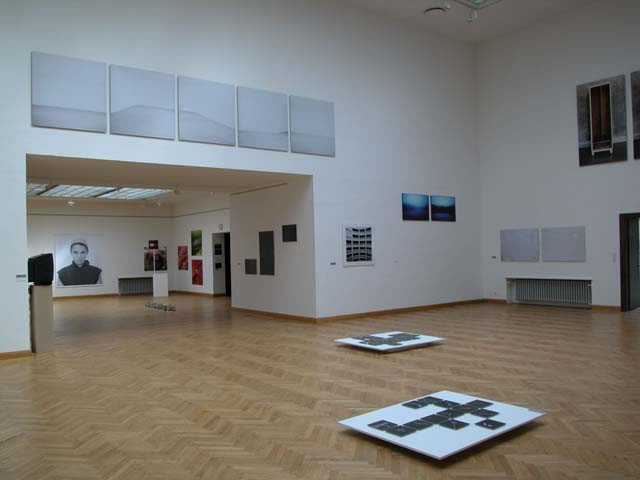


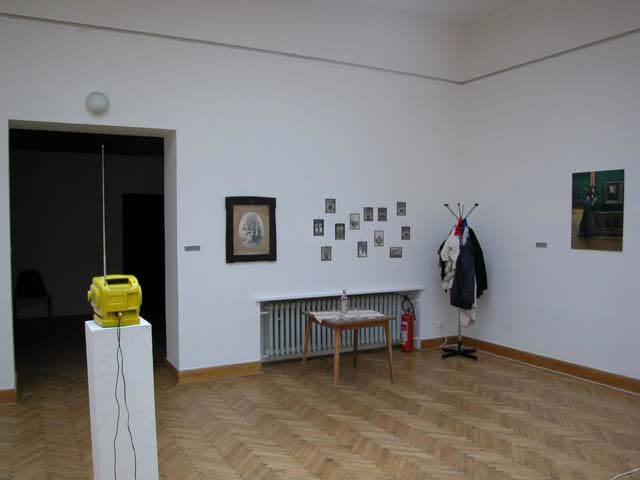
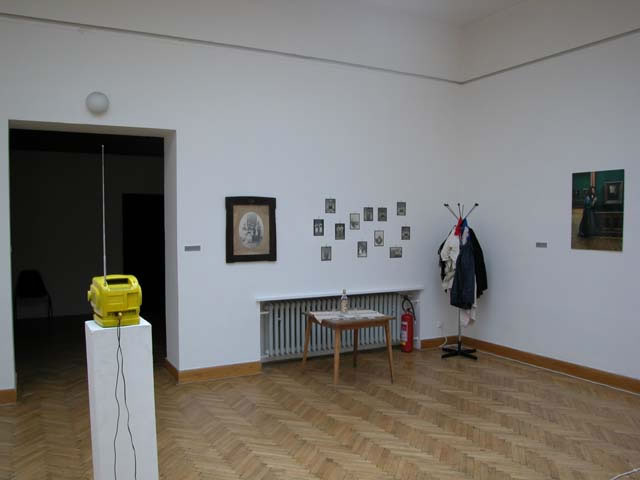
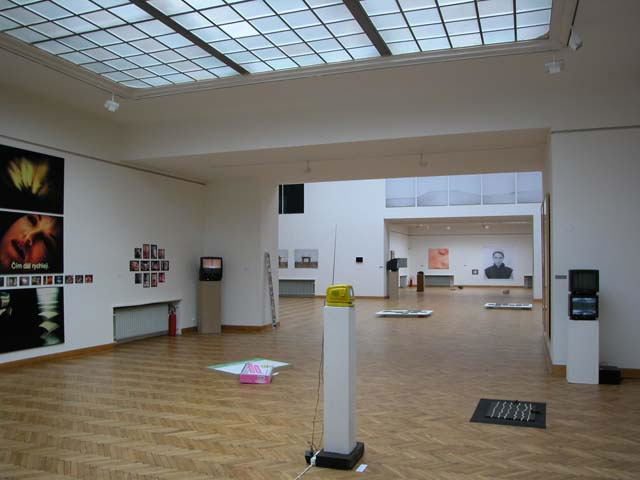
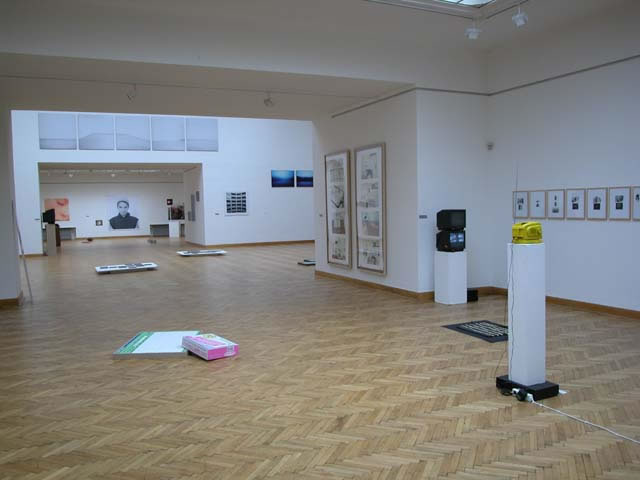



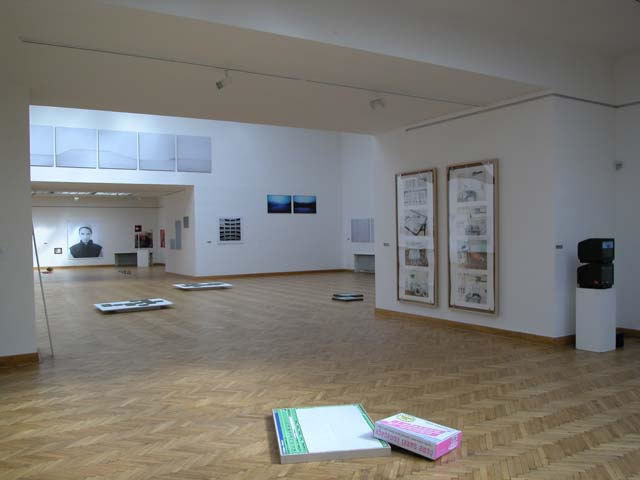
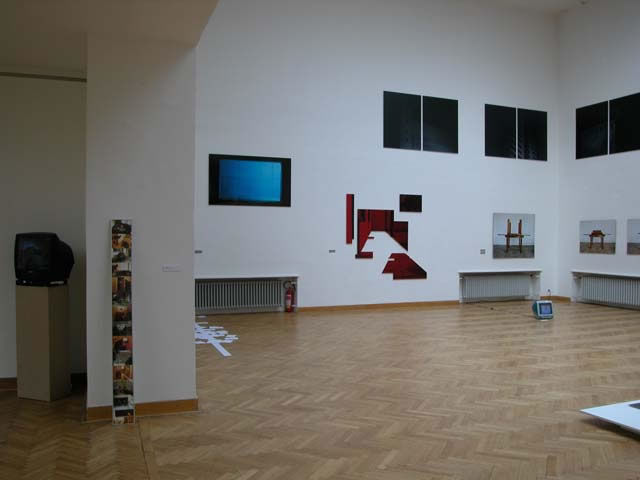

ATELIER / KLASSE
text: Dr. Jana Vránová
ATELIER / KLASSE
Výstavu vybrali a připravili vedoucí obou ateliérů a kurátorka Domu umění města Brna Dr. Jana Vránová.
Rozhodnutí připravit výstavu studentů fotografie Akademie výtvarných umění v Mohuči společně s ateliérem performance Fakulty výtvarných umění VUT v Brně v prostorách Domu umění města Brna vyplynulo z dlouhodobého zájmu zúčastněných realizovat společný projekt. Výsledkem byla prezentace ukázek z tvorby studujících a absolventů těchto vysokých škol, soustřeďujících se na fotografii.
Se skutečností, že pravidelnou součástí výstavního programu brněnského Domu umění je prezentace současné fotografické produkce, byl obeznámen vedoucí třídy fotografie mohučské Akademie výtvarných umění Vladimír Špaček, který v Brně vystavoval koncem sedmdesátých let ve Funkově kabinetu fotografie v Domě pánů z Kunštátu a později pak v Domě umění. Na základě jeho několikaletých kontaktů, jejichž výsledkem byly výměnné exkurze mezi mohučskými studenty třídy Vladimíra Špačka a studujícími na Fakultě výtvarných umění VUT v Brně, pak vzájemné výměnné akce pokračovaly i formou hostování pedagogů obou škol. Vladimír Špaček působil v brněnském ateliéru Performance-foto na Fakultě výtvarných umění VUT v Brně a vedoucí tohoto ateliéru Tomáš Ruller byl hostujícím profesorem v roce 2003 v Mohuči, kde téhož roku vystavovali i studenti jeho ateliéru. Z těchto společných aktivit vzešel záměr uspořádat v Brně společnou výstavu obou škol, na niž má navázat další obdobná výstavní prezentace v Německu.
Klasse Spacek Fotografie vznikla po příchodu Vladimíra Špačka na mohučskou Akademii, kam byl povolán v roce 1991. Práce vybrané pro současnou výstavu reflektují hlavní pedagogické i umělecké principy, které směrují tvorbu mladých umělců této třídy. Fotografie se širokým horizontem svého uměleckého pojetí a mnohostranného využití je prioritní, studenti si zde osvojují nejrůznější výtvarné i technologické postupy, aby si ověřili možnosti, které jim toto médium poskytuje. Nejsou přitom nijak vymezováni zadanými tématy, rozhodují se svobodně na čem a jak chtějí pracovat, cílem je směřování k autentické umělecké tvorbě. Pedagogické vedení vychází z respektování autorské individuality, konzultace a kritické připomínky sledují rozvíjení studentova talentu a snahy najít vlastní téma s využitím jim adekvátních technických prostředků. V kontextu současné výtvarné produkce, stírající hranice mezi jednotlivými uměleckými oblastmi, které se vzájemně prolínají a splývají, je i zde využíváno zkušeností a technologií jiných uměleckých kategorií – malby, kresby, grafiky, práce s trojrozměrnými objekty. Patří k nim neoddělitelně videoprojekce, animace, instalace i performance jako součást fotografických projektů. Vedle výtvarně kultivovaných černobílých fotografických obrazů, kde studenti vycházejí z reálného modelu – detailů lidského těla, architektury, předmětů snímaných v nových konfiguracích a evokujících nové významové kontexty se zde objevují kompozice grafického charakteru, konceptuálně orientovaná tvorba. Některé práce jsou ukázkami z rozsáhlých cyklů, jejichž autoři se kontinuálně zabývají určitou polohou inscenované fotografie, včetně obsazování sebe sama do role hlavního aktéra aranžované scény, naznačující prolínání různých časových rovin a dějových sekvencí. Výstavní kolekce obsahovala rovněž práce, které vznikaly během zmíněných výměnných exkurzí – patří k nim např. záběry z brněnské vily Tugendhat, jež fotograf kombinoval s autentickými dobovými snímky jejích původních majitelů, evokující tak minulost této stavby. Některé série reagují na aktuální politickou situaci, což je jeden z momentů, společný studujícím mohučské i brněnské školy.
Od roku 1998 existuje na Fakultě výtvarných umění VUT v Brně Atelier Performance – foto, který vznikl při dělení ateliéru Video-multimedia- performance, vedený Tomášem Rullerem. Ateliér je zaměřen na volné umění akce ve veřejném prostoru, studenti zde získávají znalosti a zkušenosti v oblasti vizuálního, pohybového, zvukového projevu, s využitím klasických i multimediálních technologií. Cílem studia je rozvíjení individuálního tvůrčího projevu, s využitím experimentálních přístupů a metod, s důrazem na obsahové kontexty prací související především s aktuálními podněty současnosti, ale i s vědomím tradic a projevů jiných kultur. Vystavená díla dokumentují svébytnou reflexi vnímání sféry politické, duchovní, zájem o závažné, problematické ale i zdánlivě okrajové, společností diskutované otázky, vážící se k přítomnosti, k vlastním prožitkům. Prostřednictvím videoprojekcí, instalací a performancí – reálných i virtuálních, interpretují studenti konkrétní podněty, reagují na tematiku, která je oslovuje a inspiruje anebo provokuje, má charakter sdělení či osobní výpovědi.
Pro společnou výstavu obou škol byly vybrány práce, reprezentující výsledky ateliéru performance za desetiletí své existence, s důrazem na díla využívající média fotografie, v digitální fotografii i ve videoprojekcích. V některých námětových okruzích se oba výstavní soubory dotýkají zájmem o téže téma, liší se však přístupem k výtvarné interpretaci – což souvisí jednak do jisté míry s užitou technologií, jednak s vlastním autorským záměrem.
I když výstava nebyla připravována s úmyslem srovnávání a posuzování odlišností, zásadních rozdílů nebo konstatování příbuzných názorů na fotografickou tvorbu, k níž je na obou školách přistupováno nepochybně z jiných výchozích pozic, přesto se konfrontačnímu charakteru nemohla zcela vyhnout. Smyslem tohoto projektu však nebylo hledání analogií či naopak kontrastujících poloh, ale prací, které se jeví jako slibný začátek uměleckého vývoje jejich autorů, a v tomto smyslu také výstava splnila očekávání.
Jana Vránová
ATELIER / KLASSE – KLASSE / ATELIER
The exhibition was curated and prepared by Vladimír Špaček (Head of the Photography Department, Mainz Academy of Fine Arts and Tomáš Ruller (Head of the Performance-Photography Department, Brno Faculty of Fine Arts) in cooperation with the House of Art’s curator Dr. Jana Vránová.
The decision to prepare a group exhibition of work by Mainz Academy of Fine Arts photography students and Faculty of Fine Arts VUT Brno performance students at the House of Art gallery was the result of long term interest on behalf of those involved in realizing a collaborative project. The result was the presentation of a selection of students‘ and graduates‘ work from both schools, focusing primarily on photography.
Vladimír Špaček, who at the end of the 70’s exhibited his photography at the Jaroslav Funke Gallery at the House of the Lords of Kunštát and later at the House of Art, was informed that part of the House of Art regular exhibition program is a presentation of contemporary photography. Based on his contacts, built up over many years, several exchanges took place between his students and those at the Faculty of Fine Arts in Brno as well as the creation of visiting professor programs at both schools. Vladimír Špaček was a visiting professor at the Performance-Photography studio of the Faculty of Fine Arts in Brno and the head of that department, Tomáš Ruller, was visiting professor in 2003 in Mainz where in the same year he realized an exhibition of his students. The intention to present a group exhibition arose from these collaborative activities. Similar exhibition projects in Germany should be realized in the future based on the experiences from this event.
The Spacek Photography Klasse was established after Vladimír Špaček’s arrival at the Mainz Academy in 1991. The work presented at this exhibiton reflects primarily the educational and artistic principles that direct the work of this studio’s young artists. Photography with a wide range of artistic interpretation and multilateral application is a priority, in this we witness how the students‘ embrace diverse artistic and technical approaches in order to verify the possibilities that this particular medium offers them. They aren’t limited by themes, they choose freely on what, and how, they would like to work, the goal being authentic artistic creation. The educational program is based on respect for the artist’s individuality. Consultation and critique follow the developing student’s talent in their attempt to find individual themes and the appropriate technique. In the context of contemporary artistic production which blurs the borders between individual artistic fields, mingling and blending into one another, we witness the usage of the experience and techniques of other artistic genres – painting, drawing, graphic arts, work with three-dimensional objects. Video projections, animation, installation and performance are also an inseparable aspect of photographic projects. Next to the artistically refined black and white photographic images where the students worked from reality – a detail of the human body, architecture, an object viewed in a new configuration, evoking new contexts of meaning – we find compositions of a graphic character, conceptually oriented work. Several works are selections from extensive cycles where the artist continually deals with specific staged photography in which the author plays the role of main protagonist in arranged settings, indicating numerous interwoven time dimensions and narrative sequences. Among the work presented are also examples of those which crystallized during the aforementioned exchanges – for example images of Brno’s Villa Tugendhat in which the photographer made usage of authentic photographs of the original owners, in so doing evoking the history of the building. Some cycles react to the current political situation which is a common subject for students of both studios. The Performance-Photography Studio has existed at the Faculty of Fine Arts since 1998 when Tomás Ruller’s Video-Multimedia-Performance Studio was split up. The studio focuses on artistic performance in public space. Students are introduced to and acquainted with visual, physical and audio expression through the use of classic and multimedia techniques. The goal of the study program is the development of individual creative expression through the use of experimental approaches and methods with emphasis on the contextual content of the work relating chiefly to current contemporary stimulus, however, with the consciousness of tradition and expression of other cultures. The exhibited works document the original reflection of the perception of political and spiritual spheres, interest in critical, problematic but also seemingly marginal current social issues, to personal experiences. Through the use of video projection, installation and performance both real and virtual, students interpret concrete stimuli and react to themes that concern and inspire or provoke them, characterized as confession or personal testimony.
For this collaborative exhibition, work that represents the results of the studio’s 10 year existence, with emphasis on work that makes use of photography, in digital photography as well as in video projection, was chosen. In several thematic circles both bodies of work meet in their interest in likewise themes, however they differ in their approach to artistic interpretation – related to a certain degree by the thechnology employed and partly in the artist’s individual intention.
Although the exhibition wasn’t prepared with the intention of comparing and judging divergences, significant differences or the declaration of related opinions concerning photography, which each school undoubtedly approaches from a different point of departure, a confrontation of this character was wholly unavoidable. The purpose of this project, however, was not the search for analogies or, on the contrary, contrasting positions but the presentation of the work itself, which displays the promising beginning of the artistic development of it’s authors. It is in this sense that the exhibition fulfills expectations.
Jana Vránová
interview: ATELIER – KLASSE / KLASSE – ATELIER
Radek Horáček: Tomáš Ruller
interview: ATELIER – KLASSE / KLASSE – ATELIER
Radek Horáček – otázky:
1. Samostatný tvůrčí čin nebo splněné zadání?
Dům umění města Brna je pro své poslání – tedy představovat aktuální tendence současného výtvarného umění – přímo předurčen k přirozené a dlouhodobé spolupráci s uměleckými školami. Prezentace tvorby studentů může mít různé podoby, takže nejdříve hledejme definici výstavy dvou specializovaných ateliérů ze dvou škol z různých zemí. Je to spíše prezentace škol? Nebo jde o předvedení metodické práce pedagogů – vedoucích ateliérů? Nebo výstava znamená prezentaci mladých samostatných osobností, které „jen“ – shodou okolností – momentálně patří do společného ateliéru?
2. Navazující otázka:
Je práce studenta v uměleckém vysokoškolském ateliéru samostatným tvůrčím činem nebo jen průpravou, cvičením či plněním zadaných úkolů.
3. Jak se jako umělci – pedagogové vyrovnáváte se základním rozporem ateliérové práce – má jít o specializaci, vymezenou zejména „řemeslem“, tedy technologií a principem práce, nebo jde o svobodný dialog s tvůrčími osobnostmi, v němž příslušnost ka ateliéru znamená jen jakési základní vymezení technologického či řemeslného rámce, který je však nutno přirozeně překračovat?
4. A teď od technologií k významům – práce na výstavě zřetelně ukazují podivuhodný (a podivuhodně přitažlivý) rozpor obou Vašich ateliérů. Práce s médiem fotografie či videa je přímo předurčena k určitému dokumentaristickému neosobnímu pozorování světa. Současně je ale zejména video ve výtvarném umění dlouhodobě spjato s akcí, tedy s mimořádně hlubokým osobním angažováním osoby umělce – autora. Je možné toto rozpětí – od objektivního dokumentu k subjektivní akci – vnímat jako jistou jedinečnost Vašich ateliérů či oborů.
5. A ještě obecně ke škole – je dnes už stabilizovaná pozice příbuzně orientovaných ateliérů na různých VŠ – mám na mysli např animovaný film na FAMU, práci s filmem a videem na AVU a FaVU VUT, digitalizaci a computerizaci ve fotografii na různých VŠ apod? Nebo tu stále existuje ten proměnlivý pohyb, který v 90.letech přinesl tolik změn?
6. A navazující – cítíte dnes – na jaře 2004 – spíše tendenci k oborovému zpřesňování a vyhraňování nebo naopak k rozvolněnému prolínání oborů. Stále mluvím o situaci na uměleckých školách, ale ta otázka přesahuje i obecně do uměleckého provozu.
7. Lze Vaše ateliéry považovat spíše za vybudovaný výsledek Vašich osobních snah nebo jsou současně vyústěním atmosféry, situace či podmínek a předpokladů, která na daných místech (v Mainzu a Brně – již existovaly?
8. Oba jako umělci i pedagogové máte s vlastním i „ateliérovým“ vystavováním mnoho zkušeností. Má brněnská prezentace nějakou nenahraditelnou nebo dosud nedosaženou jedinečnost? Nebo jde jen o další krok v dosavadních snahách?
9. A ještě jedna prognóza – Vaše specializace mají z uměleckých oborů nejblíže k digitalizaci a „virtualizaci“ – neobáváte se postupného poklesu významu výstav? Nepostačí jen virtuální celosvětová galerie v internetové síti?
Tomáš Ruller – odpovědi:
1. Veřejné prezentace studentů, skrze všechna dostupná média, od internetu až po galerie, jsou nedílnou součástí studijního programu v ateliéru performance, který vedu. I tato výstava, jako konec konců každý větší projekt, je výsledkem kontinuální práce. Na jejím vzniku se podepsalo více různých impulsů a motivací. Je samozřejmě jednak splněným předsevzetím představit výsledky mé kontinuální desetileté pedagogické činnosti v rodném městě, výstava prvně uspořádaná v galerii Médium v Bratislavě (s kurátorkou Bohunkou Koklesovou), se sem dostala přes Galerii kritiků v Praze (s kurátorkou Vlastou Čihákovou-Noshiro) a Akademii v Mainzu, jak v souvislosti s mým působením jako hostující profesor na VŠVU a na Gutenbergově universitě, tak i díky vlastnímu autorskému kreditu na umělecké scéně, a je také výsledkem zájmu o rozvinutí partnerské spolupráce ze strany Klasse prof. Špačka, vstřícnosti ředitelů Domu umění (Pavla Lišky a Radka Horáčka) k novým živým projektům, otevřenosti koncepce kurátorky Jany Vránové, zaměřené na aktuální fotografii s přesahem k videu a novým médiím, až ke šťastné shodě okolností s možností operativně využít volný termín ve výstavním plánu. A je jistě také jak reprezentací škol, fakult, ateliérů, pedagogů, studentů – mladých autorů, tak živou konfrontací pedagogických zaměření a různých uměleckých přístupů, formálních strategií a technických řešení, i ekonomických možností a politických souvislostí.
2. Obdobně jsou i jednotlivé studentské – autorské práce průměty různých momentů, impulsů i motivací, v celé škále akcentů, od studijních prací na zadání až po spontánní netématickou volnou tvorbu z vlastní inspirace. Obecně platí, že každý jednotlivý tvůrčí čin je současně průpravou k dalšímu výkonu, a výsledek plnění úkolu – cvičení může kvalitou předčit volnou kreaci tak jako skica či projekt. Kritériem výběru vystavovaných prací byla především kvalita, ale také reprezentativnost v celé škále aspektů.
3. Každý čin také vzniká v kontextu – generačním, oborovém, atd. Každý student – autor má své meze jinde, ať už vnitřní či vnější, fyzické či mentální, materiální či ideové. Vlastní práce pak spočívá v naplňování daných možností, v rozpoznávání hranic a jejich překonávání. Pedagogika je interaktivní činnost, v níž je mi výchozí metodou otevřený dialog, i neverbální, je rozvíjením kreativity a svobodného vyjadřování. Současně ale každá specializace má i své řemeslo jež vyžaduje také svoji disciplínu. Obsah a forma tak jako disciplína a volnost nedělitelně souvisejí. Dosahování vyváženosti v dynamickém procesu je velké téma.
4. Domnívám se, že náležitost k určitému ateliéru je viditelná z jisté duchovní spřízněnosti. „Duši“- atmosféru – tvůrčí napětí ateliéru utváří jak jeho vedoucí tak společenství studentů, proto je rozpoznatelný jak celkový charakter tak různorodost, v čase patrná jak kontinuita tak proměnlivost. Je evidentní, že oba ateliéry, byť se reprezentují pracemi víceméně v tomtéž médiu a vyjadřují se k obdobným tématům, jsou svojí povahou výrazně rozdílné – ať už v akcentování objektivity pohledu oproti subjektivitě přístupu, nebo zdůrazněním formální čistoty vzhledem k aktivnímu emocionálnímu nasazení.
5. Tvůrčí programy jednotlivých ateliérů jsou závislé jak na charakteru jejich uměleckých osobností a jejich pedagogických metod, tak na strategických rozvojových koncepcích a materiálním zázemí mateřských škol. Z tohoto hlediska je škoda, že FaVU dosud nenaplnila svůj záměr založit ateliér fotografie. V oblasti digitálního, technického a manipulovaného zobrazování se tak VUT nechalo předstihnout (vznik nového ateliéru na AVU v Praze následoval až po neuskutečněném záměru s Veronikou Bromovou v Brně). Věřím ale, že zdravý pohyb vedoucí k proměnám tu neustrnul věčně a znovu nalezne svou přirozenou dynamiku.
6. Zdá se mi v našem případě, že tendence k precizaci programů stavěných formálně na metodách a prostředcích je nyní v rovnováze s mezioborovým přesahováním strategií stavěných na přístupu a obsahu, a to je pozitivní.
7. Každý výsledek je průsečíkem veškerých (i osobních) potenciálů a vynaložených energií, historických daností a okolností i osudových šancí a náhod. I Brno má své kladné stránky a progresivní možnosti, může navazovat na kulturní tradici meziválečné moderny, na výrazný vliv Bauhausu, na silné konceptuální tendence, má ojedinělé zázemí pro fotografii a dobré předpoklady pro experimentaci v oblasti nových médií.
8. Brněnská společná prezentace je jedinečná v tom, že zároveň bilancuje desetiletí činnosti a současně zachycuje aktuální živé tendence, že akcentuje médium fotografického obrazu, ale je otevřená přesahům (od videa přes počítačové animace a internetové projekty až k akcím a instalacím), je koncepční v základních tématických blocích (světlo a prostor, tělo a akce, mediální strategie, sociální a politický kontext) i flexibilně, hravě a kompozičně ozvláštňujícím způsobem instalovaná, ukazuje podobnosti i kontrasty, srovnává i konfrontuje, je postavená na principu partnerství i zdravé rivality.
9. Přestože se výrazná část této prezentace odehrává ve „virtuálním“ prostoru, o ztrátu „půdy pod nohama“ nemám obavy. Platí to i obecně.
Brno, Duben 2004
interview: ATELIER – KLASSE / KLASSE – ATELIER
Radek Horáček – questions:
1. Independent creative activity or the fulfillment of a task?
The Brno House of Art, by definition – an institution dedicated to the presentation of current trends in contemporary art – is naturally inclined to long term collaboration with fine art schools. Students‘ presentations generally take on various forms, so first and foremost we are searching for an exhibition that defines two specialized studios from two schools from different countries. Is it more of a school presentation? Or is it rather the demonstration of pedagogical methods – of studio mentors? Or is the exhibition characterized by the presentation of young independent personalities, who „just by coincidence“ – happen to belong to the same studio?
2. Ensuing question:
Are the works of university students studying fine art an independent creative activity or just preparation, training, or the fulfillment of a given task?
3. How do you as artists pedagogues cope with the fundamental contradicition of heading a studio – is it specialized, defined specifically by „craft“, meaning technology and work principles, or is it rather an open dialogue you carry on with the students creative personalities, in which their affiliation with a particular studio defines the framework of craft and technology, a framework which by default becomes necessary to transgress?
4. Let’s move from technique to meaning – the exhibited work obviously displays a remarkable divergence (a remarkably attractive variance) between studios. The medium of photography or video is predetermined for use as documentation, for objective observation of the world. At the same time, however, video in particular has a long standing relationship with performance art, that is to say with a profound personal cast in the form of the artist – the author. Is it possible to perceive this spectrum – from objective document to subjective performance – as a particularity specific to your studio or field?
5. Concerning school in general – has the position of similarly oriented studios at various universities become stabilized – I’m thinking of, for example, film animation at FAMU, work with film and video at AVU and FaVU VUT, digitalization and computer manipulation of photography at different universities etc.? Or does the fluctuating momentum that brought so many changes in the 90’s still exist?
6. To follow up – do you feel today – in spring 2004 – a tendency towards the particularization and deliniation of particular fields or, on the contrary, a tendency towards gradual overlapping? We are still discussing the situation at art schools, but the question applies to the art world in general.
7. Can your studios be considered the outcome of your personal efforts to establish them or are they concurrently the result of the atmosphere, situation or conditions and assumptions that existed in the given locations (in Mainz and Brno)?
8. As artists and pedagogues, you both have numerous experiences with your own exhibitions as well as „studio“ exhibitions. Can the presentation in Brno be characterized as something that is irreplaceable or that hasn’t yet been achieved? Or is it just another step within the existing efforts?
9. And a last prognosis – of all artistic fields, your specialization has the closest relationship to digitalization and „virtualization “ – aren’t you concerned about the gradual insignificance of exhibiting? Isn’t a virtual on-line global gallery sufficient enough?
Tomáš Ruller – answers:
1. The public presentation of student work, in all available media, from the Internet through the gallery, are an integral part of the performance studio curriculum of which I am the head of. Even this exhibition, is in the end, like any other extensive project, the outcome of an ongoing process. Various impulses and motivations were imprinted in its formation. On the one hand it is, of course, the fulfilment of my resolution to present the results of a decade of my continual pedagogical activity in my home town. The exhibition we see here today was originally held at Gallery Médium in Bratislava (in collaboration with Bohunka Koklesova) and then presented at Gallery Kritiku in Prague (in collaboration with Vlasta Čiháková-Noshiro) and the Academy in Mainz; a result of my presence as visiting professor at VVU and Gutenberg University, thanks to my position in the art scene and interest in developing a collaborative partnership on behalf of prof. pačka’s studio, the obliging directors at Dům umění (Pavel Lika and Radek Horáček) concerning the development of new exciting projects, the openness of curator Jana Vranová’s concept which focuses on contemporary photography which overlaps with video and new media, and the lucky coincidence that allowed us to take advantage of a free term in Dům umění’s exhibition schedule. And certainly it represents the schools, faculties, studios, pedogogues, students – young authors, as well as being a lively confrontation of educational principles and various artistic approaches, formal strategies and technological solutions in addition to financial situations and political associations.
2. Student work which is based on an assignment projects various moments, impulses and motivations covering a wide spectrum of emphasis in the same way as spontaneous creation, which is based on personal inspiration rather than based on a particular theme. Generally, one could say that each individual creative act is simultaneously preparation for the next realization and the resulting fulfillment of a task – exercise can outdo unrestricted creation in the same way as a draft or a project. The criteria which the selected work was based on was chiefly quality, but also the representation of a wide spectrum of aspects.
3. Also every activity arises in a context – generational, departmental, etc. Each student – artist has their own limits, whether they be inner or outer, physical or mental, material or ideological. Individual work therefore consists of fulfilling the given possibilities, in identifying boundaries and overcoming them. Pedagogy is an interactive activity, wherein my point of departure is a method consisting of open dialogue, nonverbal as well, it is the development of creativity and independent expression. At the same time, however, each specialization has its craft, which also expresses its discipline. The content and the form, like the discipline and the artistic freedom, are inseparably related. Obtaining a balance in the dynamic process is a significant theme.
4. I believe that affiliation with a particular studio is visible through a specific spiritual association. The „esprit“ – atmosphere – creative pulse of a studio is created by its mentor as well as the community of students that it is made up of, for that reason its overall character and intrinsic diversity is recognizable, over time continuity and variability become apparent. It’s obvious that both studios, although represented by work more or less employing similar media and expressing similar themes, are in character markedly distinct – whether it’s the manner in which the objectivity of a viewpoint is accentuated as opposed to a subjective approach, or the emphasis on formal purity in consideration of an active emotional charge.
5. The creative programs of the individual studios are dependent on the character of their artistic personalities and their pedagogical methods, as well as on the development strategy concepts and material capacity of the universities they belong to. From this perspective it is unfortunate that FaVU hasn’t yet fulfilled it’s aim of founding a photography studio. VUT allowed itself to be surpassed in the area of digital, technical and manipulated imagery (a new studio was opened at AVU in Prague after plans with Veronika Bromova in Brno were abandoned). We believe that the healthy inertia towards transformation hasn’t stagnated permanently and that the faculty will regain it’s natural dynamic character.
6. In our case, it seems to me that the tendency toward elaborating a program based on methodology and means is currently in balance with the interdepartmental strategy based on approach and content, and that is positive.
7. Every result is a point of intersection of all (even personal) potential and invested energy, historical conditions and circumstances as well as destined chances and coincidences. Even Brno has it’s positive aspects and progressive possibilities, it is possible to relate to the post-WWI modern tradition, to the remarkable Bauhaus influence and the strong conceptual inclination; it has a unique infrastructure for photography and good conditions for experimentation in the field of new media.
8. The group presentation in Brno is unique in that it is a retrospective of 10 years of activity simultaneously capturing current trends that are accented by the medium of photographic image, while remaining open to overlapping (from video to computer animation and internet projects through installation events). Conceptually it is presented in basic thematic blocks (light and space, body and act, media strategy, social and political context) although it is flexible, playful, and is installed in a compositionally unusual manner revealing similarities as well as contrasts, compares as well as confronts it, is built upon principles of partnership and healthy competition.
9. In spite of the fact that a significant part of the presentation takes place in „virtual“ space, I’m not concerned about losing „the earth under foot“. That holds true in general as well.
Brno, April 2004

